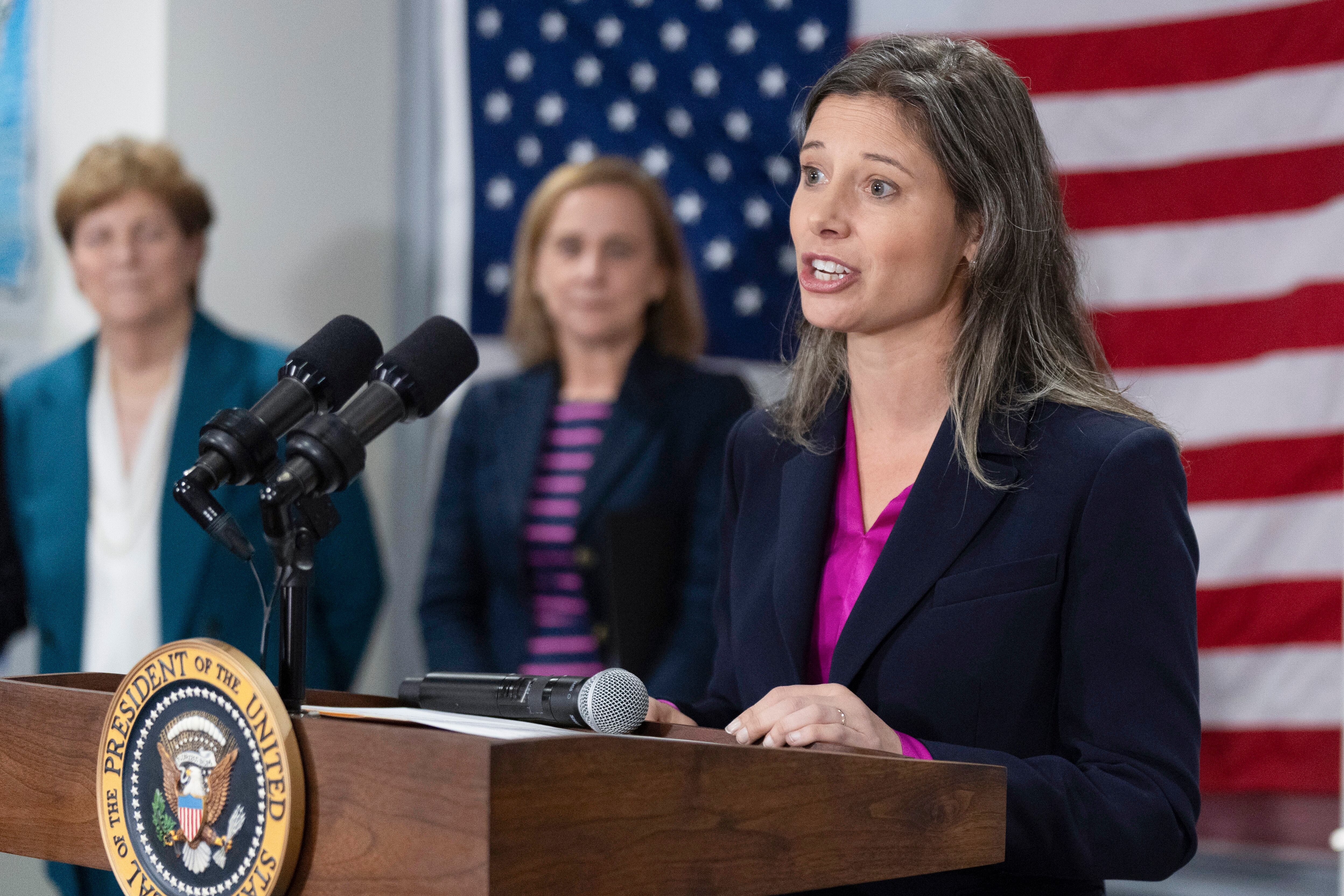AURORA, Colorado — Gen. CQ Brown took command of the Air Force in August 2020 with a mission: to reshape a service that had spent nearly two decades in uncontested counterinsurgency fights in the Middle East.
Now, Brown said, the Air Force needed to get ready for a future war against a major potential adversary such as China and wouldn’t be able to count on the same military dominance as in the last war.
Within weeks of becoming the Air Force’s 22nd chief of staff, Brown laid out his plan, titled “Accelerate Change or Lose,” which spelled out how the Air Force would adapt. His plan focused on four areas: empowering airmen, shrinking the Air Force’s unwieldy bureaucracy, preparing for global competition, and transitioning to a future force design.
When Air Force Secretary Frank Kendall became the service’s top civilian in 2021, his actions, including establishing a series of operational imperatives, boosted Brown’s efforts, Brown told Defense News in a March 7 interview at the Air and Space Forces Association’s AFA Warfare Symposium here.
“I started a fire — he put gas on it,” Brown said of Kendall.
In his keynote address at the conference earlier that day, Brown announced he had recently signed a new strategic document called the Future Operating Concept to continue pushing the Air Force to change. This document, prepared by deputy chief of staff for strategy, integration and requirements Lt. Gen. Clint Hinote, details how the Air Force will “operate, fight and win” jointly with the other services and carry out its core functions, Brown said.
The Future Operating Concept lays out six different but overlapping fights, which Brown said the Air Force must be able to do at the same time: to compete with and deter adversaries, to hold air superiority, to get into the theater, to deny adversary objectives, to get airborne, and to sustain the fight.
Brown spoke with Defense News about the next steps for his Accelerate Change or Lose strategy. This interview has been edited for length and clarity.
Which of the four key areas of Accelerate Change or Lose have seen the most progress, and which need more work?
The two that I think have made the most progress are on our airmen and on competition. Because they’re intertwined. It’s the aspect of having our airmen better understand the threat and what we’re up against. And moving away from the Middle East mentality … to really have a broader perspective.
The other part on airmen is creating an environment so they can all reach their full potential. It’s the work we’ve done with diversity and inclusion, it’s the work we’ve done on smart talent management perspectives. So that [airmen] can have the ability to cross train much easier than we’ve done in the past.
Some of these may [appear] little, but they’re big. And the reason why I say they’re big is because it’s going to help with our retention. The last thing I’d hit on is my wife Sharene [Brown’s] focus on [the] Five & Thrive [initiative to improve] the key areas that impact our military families: education, childcare, housing, health care, and spouse employment. Because it all helps with retention.
The ones that have slowed down a little bit is the bureaucracy — I kind of knew that one coming in. The future force design and implementation, I’ve seen good progress there. Secretary Kendall has helped us move forward. I saw that [momentum] in the FY23 authorization and [appropriations] bill[s] … and I see the same thing for FY24.
What do you want to do to keep moving forward on the issues that have been a little trickier, such as bureaucracy and future force design?
Let me just talk about bureaucracy first. It’s the collaboration, it’s breaking down barriers. Those of us in senior positions, sometimes our young airmen are afraid to come talk to us because of our rank and position. But we’ve got to set an example, that we want to hear all the ideas. Ideas don’t have rank. And how we were able to break that down and how we’re able to collaborate — one thing that COVID has done for us is, we use Microsoft Teams and other collaboration platforms more so than we have in the past.
Now, it’s still uncomfortable for some people. But we’re able to do more and more of that to bring our airmen in so you can hear all those ideas. You don’t wait until you have a very nicely put together staff package.
On the force design, I think we’ve got the first steps there. The signing of the Air Force Future Operating Concept yesterday sets the foundation for work that Gen. Hinote and [his] team have already started. That kind of change is going to make people uncomfortable. Sometimes you have to have small success to have larger success. But I think we’ve got some momentum going in some of the things we are doing. And now, how do we tie all that together in that future force design? I think we have the right initial building blocks to get us on a good path.
You said you knew coming in that clearing out bureaucracy was going to be a bit of a bear. What’s been the most nagging roadblock to making the changes you feel are necessary?
Maybe I was a bit naïve when I came in and put bureaucracy on the list. I worked in DC last time as a colonel. I saw it, but I probably didn’t see it to the level [it was] because I was working more internal to the Air Force. That’s the reason why, in Accelerate Change or Lose, I put the word collaboration, because I knew I was going to have to work with Congress, [inside] the Air Force, with [the Office of the Secretary of Defense], [and] with our industry partners.
We’ve had some progress here. Because of the collaboration, we’re able to break down some of the bureaucracy. But if I could actually take a big bulldozer to it, I really would, [take] a wrecking ball to some of these things.
We have often had policies and processes where collectively, we will sit and go, well, we can’t do that, because of a policy. And the challenge is we talk ourselves out of things. What I ask now is, OK, what office, what individual owns the policy and owns the approval process. And you figure it out, when you start really digging into it, we were probably slowing our own selves down because of our own misperceptions.
And then sometimes we’ve got to get the right person with the policy in the room to understand how they’re impeding progress, because that policy was made, five, 10, 15, 20 years ago, for a very specific purpose. And the facts and assumptions have changed. And we’ve got to actually address those policies and figure out and talk about how they impact not only the operational environment we execute in, but also the capabilities we require as an Air Force and as a military.
Stephen Losey is the air warfare reporter for Defense News. He previously covered leadership and personnel issues at Air Force Times, and the Pentagon, special operations and air warfare at Military.com. He has traveled to the Middle East to cover U.S. Air Force operations.





